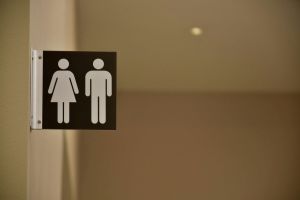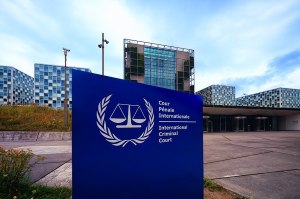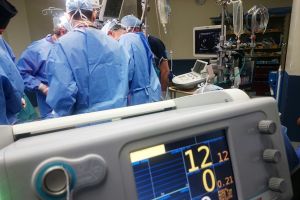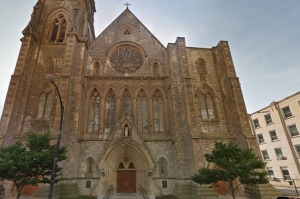Earthquake Hot Spots in the U.S.
Half of the U.S. tagged as 'earthquake zones'
The biggest earthquakes in the country don’t just happen in California. In reality, most of the population is unaware that nearly half of the states in America have earthquake zones.
Thousands realized earthquakes can happen at any time after the magnitude 5.8 earthquake that struck Virginia on Tuesday. It was not only a shock to some, but it was a rare but significant event for the region, according to the U.S. Geological Survey or USGS.
"It was quite sizable," seismologist Hua-wei Zhou of Texas Tech University told the National Geographic.
The Christian Post reported the temblors shook buildings and forced evacuations in Washington, D.C. and New York City. The surprise quake was followed by a magnitude 2.8 aftershock 45 minutes later.
The U.S. Geological Survey’s data shows that earthquakes rarely strike the U.S. East Coast and are generally less severe when they do.
"There are lots of other earthquakes that may happen first,” said marine geologist Chris Goldfinger of Oregon State University in Corvallis.
Tuesday afternoon’s big quake is the largest on record in that region. USGS said it was the strongest quake to hit the entire state since the 5.8 magnitude temblor in 1897. The U.S. Geological Survey had at one point raised the magnitude to 5.9 but lowered it again to 5.8.
Earthquakes are rare in the eastern U.S. because the region is farther from a plate boundary, which is a region where tectonic plates meet and grind together.
By contrast, California has a major fault line, named the "San Andreas fault." It runs vertically through most of the state, Zhou said.
There are several lesser-known earthquake zones lurking in other parts of the country that are just as dangerous, if not more dangerous, than the famed San Andreas Fault. Experts say minor earthquakes happen all the time around the country.
Some are just not big enough or strong enough for people to feel them.
For instance, not many people realize there was a magnitude 5.3 earthquake that rattled southern Colorado on Monday at around 12:00 p.m. (MDT) Survey reports show the quake caused strong shaking, but minor damage, and was felt throughout the state of Colorado and neighboring states.
Virginia’s earthquake on Tuesday prompts the question as to the location of the country’s most hazardous seismic hot spots outside of California.
Northern California:
A much greater hazard than the San Andreas Fault exists to the north where the ocean crust is being forced beneath the North American continent.
Some of these faults are capable of producing quakes bigger than the 1906 San Francisco quake, but because the time between major jolts is longer than in California, many people who live near these faults don’t even know they are there.
Geologists say a massive earthquake here would completely devastate the region, which includes Portland, Seattle and Vancouver. Experts say there could be thousands of deaths and unprecedented damage for a quake in this country. Major travel routes will be impassable.
Fortunately, these mega quakes only come around once every few hundred years.
“Unfortunately,the fault may be due for another big one any day now,” says the USGS.
The last monster quake that ruptured the entire length of the Cascadia fault occurred in 1700 and was around a magnitude 9. It created a tsunami that crossed the entire Pacific Ocean and caused damage along parts of the Japanese coast.
"It’s been 308 years since the last one so the probability is much higher," Goldfinger said. “Making matters worse, the region isn’t prepared. Portland has lots of unreinforced masonry buildings" that are likely to collapse in a major quake. The retrofitting has barely begun. It’s going to be a mess."
Missouri:
Right in the middle of the country lurks a geological enigma near New Madrid, Mo., that has produced some of the largest quakes on record for the United States but has yet to be fully explained by scientists.
Most of the major earthquakes in the world occur at tectonic plate boundaries where areas of land collide past one another, but not the one in Missouri, according to the USGS.
"It’s a big mystery," said geologist Eugene Schweig of the U.S. Geological Survey. "New Madrid is about as far from a plate boundary as you can get."
In 1811 and 1812, three massive earthquakes struck near New Madrid, the largest of which exceeded a magnitude 8 and caused violent, damaging shaking.
The quake was felt over an area of two million square miles, which is nearly two-thirds of the country.
Utah:
Utah’s incredibly scenic landscape has hidden dangers. Running along the base of the western edge of the Rocky Mountains, the 240-mile Wasatch Fault lies underneath Salt Lake City and the state’s urban corridor, home to 1.6 million people, the National Geographic reports.
Though the Wasatch Fault has not delivered a major quake since the Mormon settlers arrived in 1847. However, geologists have found evidence that it is capable of unleashing jolts as big as magnitude 7.5, according to recent USGS statistics.
Geologists say it is one of the world’s longest normal faults. The land actually on one side of the fault drops down relative to the other side during an earthquake.
"That’s basically the process that formed the Wasatch Range," said geologist Chris DuRoss of the Utah Geological Survey. “Over the last 17 million years, the fault has experienced almost seven miles of slip, raising the mountains above the adjacent valley floor.”
Alaska:
The second-largest earthquake ever recorded struck Alaska’s Prince William Sound in 1964. The magnitude 9.2 quake killed 128 people, most by the resulting tsunami, according to USGS research.
In some places, the ground was uplifted almost 38 feet, and in others it dropped more than seven feet. The tsunami reached heights of around 220 feet locally, and killed 11 people 1,650 miles away in Crescent City, Calif.
The "mega-thrust" quake was the product of the collision of two tectonic plates, the oceanic plate being forced beneath the continental plate. The plates are still moving and accumulating stress that will eventually be released in another big quake.
“There could be several smaller magnitude 8 quakes filling gaps in time that aren’t quite big enough to show up in the geologic record,” said geologist Peter Haeussler of the U.S. Geological Survey in Anchorage.
"There’s enough question that we just really don’t know. The big Kahuna for Alaska is the Denali Fault. It had a 30-mile-long rupture in a magnitude 7.9 earthquake in 2004.”
Hawaii:
Hawaii is well known for its volcanic hazard, but the islands are also susceptible to major earthquakes. On record is the magnitude 7.9 quake in 1868 that killed 77 people.
Experts simply do not know when the next earthquake will strike Hawaii because some early records do not exist. Scientists say the most recent giant quake was a magnitude 7.2 in 1975, which was 107 years after the previous one.
Since 1868, there have been seven quakes of magnitude 6.2 or greater, most recently a 6.7 in 2006 that caused $250 million in damage.
"The reality is that we could have a large earthquake at any time," said geologist David Schwartz of the U.S. Geological Survey.
For more information about earthquakes in Virginia visit: http://www.geol.vt.edu/outreach/vtso/quake.html.





























